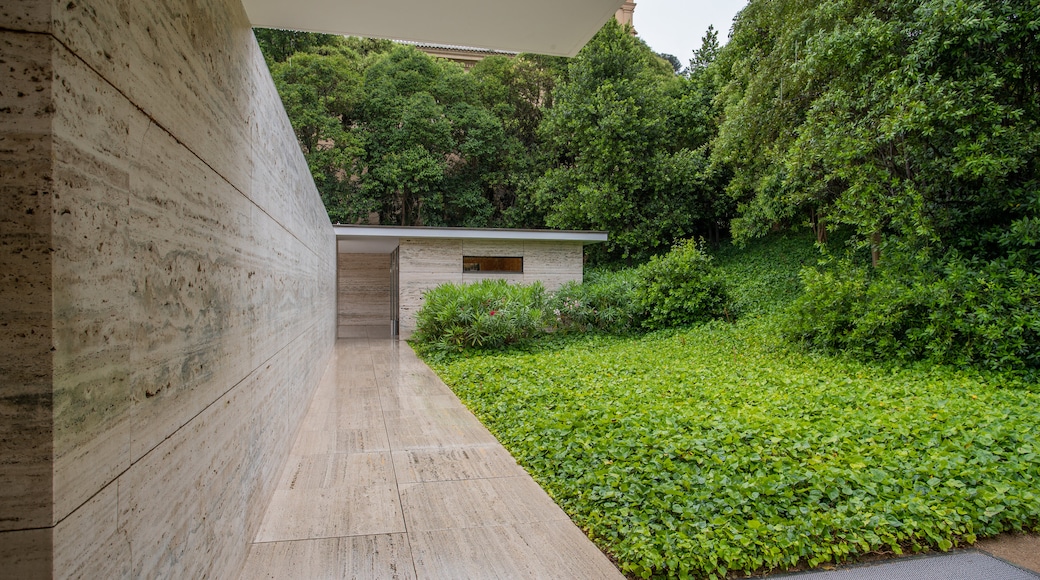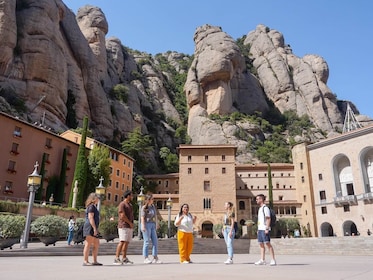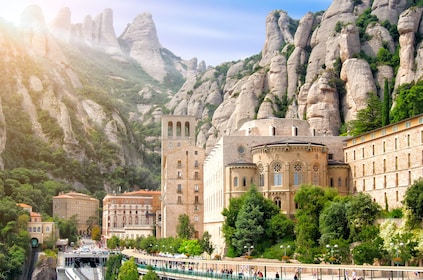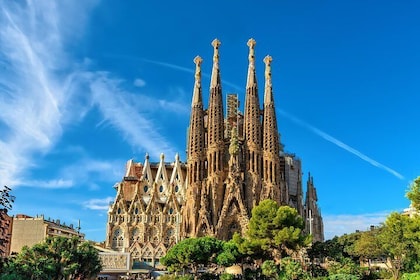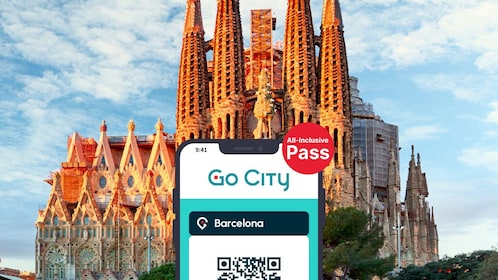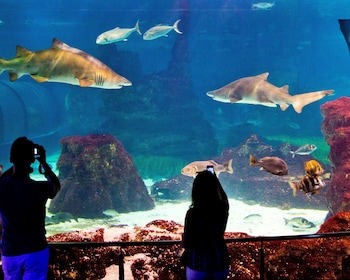When the Weimar Republic commissioned the Bauhaus director to build the Pavelló Mies van der Rohe for the 1929 Barcelona International Exhibition, they caused an aesthetic revolution. Instead of packing it full of stalls and stands hawking German wares, Mies van der Rohe and designer Lilly Reich created an austere, almost empty space whose design came to exemplify 20th-century architecture. Its clean lines and luxurious materials were a phenomenon. The pavilion was dismantled in 1930. Today visit its reconstruction from the 1980s to go back in time to the birth of Modernism.
Let the pavilion itself guide your visit, as van der Rohe intended. Notice how the small silver columns, rather than straining under the white marble roof, seem instead to be providing anchors to keep it from flying away. See how the geometric shapes shift as you climb up the steps to the pavilion itself. Follow the direction of the visit, as the walls of the building narrow and widen to create movement even in the exquisite stillness of the stone.
Spend time contemplating the Kolbe sculpture Dawn (now a reproduction), whose naked human form offers a vivid contrast to the almost ascetic sharpness of the building. Appreciate how the building and pool create a thousand different reflections of the work, offering glimpses and close-ups of different aspects of it from almost every space.
See the so-called Barcelona Chair, designed for the pavilion, which spawned a thousand imitations, much like the building itself.
Get to the Pavelló Mies van der Rohe in the Sants-Montjuïc neighborhood in 30 minutes by subway or 15 minutes by car from the airport or in 20 minutes by subway from the center of town. Drive from the town center in about 15 minutes. The Sagrada Família is a 35-minute subway ride away. The pavilion is walking distance from the Plaça d’Espanya, one of the city’s main transportation hubs and is close to other sites from Barcelona’s 1929 International Exposition.
There is a fee for admission to the pavilion, which is open daily from mid morning to evening. The pavilion closes earlier in winter. Book a guided architectural tour online.




